At once a vision of the future, a thoughtful provocation, and an achievable lifestyle. In progress... Since 2012
Don't wanna be here? Send us removal request.
Text
Starting next summer, the major downtown areas of Hanoi will ban all gasoline-powered motorcycles as part of a program to cut down on emissions. The plan will go into effect on July 1, 2026, and then will expand the following year to cover more districts outside of downtown, and eventually include gasoline-powered cars as well. Other major cities like Ho Chi Minh City and Da Nang are now studying similar measures. The plan is part of Vietnam’s national goal to phase out gas-powered two-wheelers entirely by 2045. And in a country where motorcycles are the lifeblood of daily transportation, with an estimated 72 million of them on the road, this marks a seismic shift.
88 notes
·
View notes
Text
Ugandan entrepreneurs Sandra Namboozo (26) and Samuel Muyita (28) have scooped both the People’s Choice and Community Healers awards at the prestigious 2025 Young Inventors Prize, organised by the European Patent Office (EPO). The duo was recognised for their groundbreaking innovation, Karpolax—a biodegradable sachet that preserves fruit freshness without refrigeration. The invention impressed both the public and an independent jury. The sachet, placed inside fruit packaging, emits a blend of plant-based volatile organic compounds derived from cloves, lemongrass, eucalyptus, and wintergreen. These compounds suppress ethylene emissions to slow ripening and protect against mould, fungi, and bacteria.

In pilot trials conducted with the National Agricultural Research Organisation (NARO), Karpolax extended the shelf life of mangoes from 11 to 33 days. The technology has also been tested successfully on bananas, apples, and oranges.
The innovation offers a critical solution for smallholder farmers in sub-Saharan Africa, where cold storage facilities are often unavailable or unaffordable.
Since its launch in 2020, Karpolax has supported over 100 farmers, 20 exporters, and 250 vendors, helping prevent the spoilage of more than one million tonnes of fruit. The sachets are now being adapted for use with pineapples, capsicum, and berries.
“One sachet can preserve a five-kilogram box of fruit for up to 30 days, after which its active ingredients are used up,” Namboozo explained.
2K notes
·
View notes
Text
#solarpunk
Solarpunk, realism, dystopia: a rant






Hopefully this is helpful to someone out there 🌸
You can find the Prompts podcast here, I drew some of the covers :D Also check out this digital library full of Creative Commons Solarpunk art (neither of these are sponsored).
🦗Somewhat shameful plug🦗
I would highly appreciate if you threw me a couple bucks on Buy Me a Coffee or bought a commission, my money number is only getting smaller these days 😔🤙
10K notes
·
View notes
Text

1K notes
·
View notes
Text
Britons could soon install balcony solar panels in flats and rental homes | Business | The Guardian
Britons could soon install balcony solar panels in flats and rental homes | Business | The Guardian https://share.google/A3aQPNdUnB57E8MJu
90 notes
·
View notes
Text
Friend of the blog @jumpbuddhagun / Andrew Dana Hudson has written a 10 year update reflecting on his influential early Solarpunk essay: The Political Dimensions of Solarpunk. His new retrospective explores what’s held up, what’s changed, and maybe, what’s next.
Personally, I’m getting older. Saving the planet is going to require digging a lot of ditches and hauling a lot of solar panels up onto roofs and potentially strolling through a lot of tear gas. That’s all a young man’s game. If a global civilian climate corps started recruiting able-bodies tomorrow, I’m not so sure I’d make the cut. But on the other hand, my parents have, slowly but surely, over years, replaced much of the grass of their suburban lawns with raised beds, fruit trees, grape trellises, berry patches, compost bins, rainwater barrels, edible cover crops, and pollinator-friendly ornamentals. It’s a truly beautiful transformation. If they can do that in their 70s, I can surely find something useful and generative and solarpunk to do in my 40s.
In 2015 I wrote a long essay about the politics of the solarpunk movement I saw emerging on Tumblr. Today, I'm revisiting that essay to see how it held up.
134 notes
·
View notes
Text

The IGA Extra Famille Duchemin supermarket in Montreal features a 25,000 square-foot rooftop garden. Established in 2017, it produces over 30 varieties of organic vegetables, herbs, and even honey from on-site beehives. This produce is harvested and sold directly in the store, providing customers with ultra-local, fresh options.
1K notes
·
View notes
Text
Shanghai is rolling out a new kind of public bus — one that’s designed by commuters, and launched only when enough riders request it. Branded “DZ” for dingzhi, or “customized,” the system invites residents to submit proposed routes through a city-run platform. Others with similar travel needs can opt in or vote, and if demand meets the threshold — typically 15 to 20 passengers per trip — the route goes live. More than 220 DZ routes have already launched across all 16 city districts. Through an online platform opened May 8, users enter start and end points, preferred times, and trip frequency. If approved, routes can begin running in as little as three days.
159 notes
·
View notes
Text
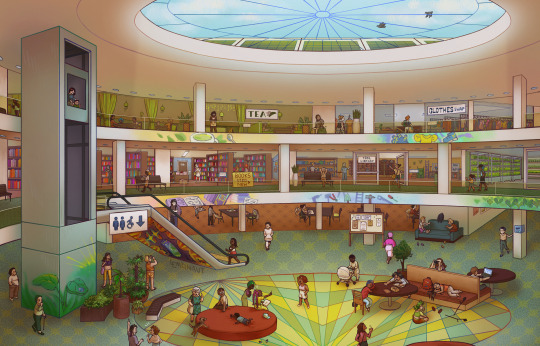
Finally finding out what this Solarpunk illustration I drew for @andrew-ism back in February is for. It's featured in this video :D I have yet to watch it but I trust it'll be good.


This is meant to be a mall that's been repurposed by and for the community, turned from a place of consumption into a great hangout spot where you can chill, have a meal, borrow some books or tools, exchange out clothes you don't wear for ones you like better and let another person take yours etc.


You can find the full-res version at the Story Seed Library.
(In hindsight, could've filled that elevator wall with more art...I also feel like I could've done more research for the whole piece, but at this point it is what it is).
720 notes
·
View notes
Text
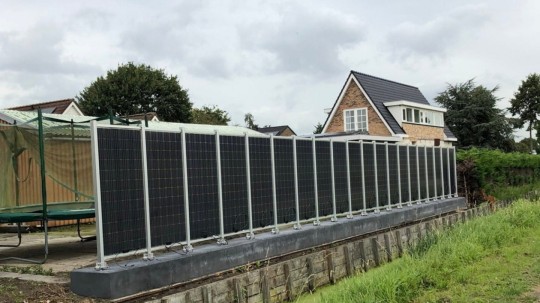
Solar panels are now so cheap, Europeans are building fences with them
The panels capture less sunlight when used as fencing than they do on roofs, but the process saves on high labour and scaffolding costs, according to analysts and posts on social media by households that have installed them.
“This is the result of solar panels getting so cheap that we’re just putting them everywhere,” said Jenny Chase, lead solar analyst at BloombergNEF. “Since installation cost — labour, scaffolding — is the vast majority of the cost of installing a rooftop PV [photovoltaic] system, it can make sense.”
“Why put up a fence when you can just put up a load of solar panels, even if they’re not aligned exactly to the sun?” says Martin Brough, head of climate research at BNP Paribas Exane. “Where the panels themselves are just incredibly cheap, the constraints become the installation costs and the sites . . . you get a bit of a DIY mentality.”
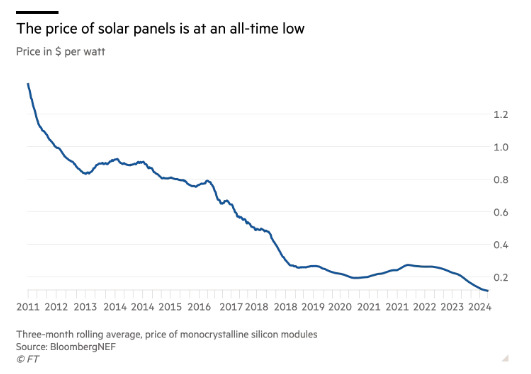
source
308 notes
·
View notes
Text

553 notes
·
View notes
Text
This is the way!
So. Storytime for guerilla gardeners and solarpunk enthusiasts. This story comes to me 3rd hand but I believe the basic shape of it is true, even if details may be off.
So there’s this guy who lives in my parents’ town. Wanted to have a pocket farm but lives on an urban lot in a small city instead because y’know jobs and stuff. He could definitely get a few raised beds in the backyard but nothing all that impressive and the front yard is on a very busy road with the expectation that it’ll look reasonably traditional (plus planting food by busy roads isn’t always a good idea).
However
After he’s lived there for a while, he realizes his neighbors are all older people who maybe have more challenges taking care of their yards than they used to. So he goes to his next door neighbor and offers a deal: I’ll mow and maintain your front yard for free if you let me knock down the fences between our backyards and plant them both with food. And you’ll get a cut of the produce.
Presumably the neighbor already knew and trusted this guy because he said yes. So he starts mowing and maintaining his and his neighbor’s front yards and planting food in their now-shared backyards. After a season or two this goes well enough that the next neighbor down the street asks if he can be in on this too.
So now there’s 3 front yards to mow and three backyards full of produce. And it keeps going from there. Dude gets a rider lawnmower and does everyone’s front yards, and meanwhile he’s maintaining an entire block’s worth of produce in the back. His yields got so high that he was able to start offering boxes of produce outside of the block’s residents too. This is how I heard of him: my parents’ next door neighbors were picking up a regular box of produce from him.
I love a couple of things about this story:
Offering to maintain people’s front yards for them allows baby boomers to feed their thirst for keeping up appearances while still getting food production into the neighborhood
As homeowners age offering services like this is legitimately good community building
BLOCK-LONG POCKET FARM
These exact circumstances might not be replicable everywhere, but I love thinking about how these principles could be applied.
18K notes
·
View notes
Text
We are not destructive by nature, but by habit. Our potential for destruction is mirrored by our potential for regeneration. If we recognize our true role as a keystone species, we can be the primary vector for restoring ecosystems and healing the earth. - Neal Spackman
youtube
87 notes
·
View notes
Text
I was talking to my dad about renewable energy and he was like “the only problem with solar farms is they take up so much space.”
And it made me think about a city and how much sun exposure all the rooftops in a city get and…why not just make the city it’s own solar farm by putting solar panels on every rooftop?
46K notes
·
View notes
Text
Preliminary planning started back in 2011, and in 2020, the reservoir action management plan, a detailed 260-page document was published by the Klamath River Renewal Corporation – the non-profit entity formed to manage the entire dam removal project. ''The document gave us our targets, and has kept us on track," says Joshua Chenoweth, senior ripariani ecologist for the tribe who was hired to manage the revegetation project. Between 2018 and 2021 seed collection crews – many of whom are tribal elders – were hired to harvest native seeds, by hand, in preparation for the dam removal. They collected 98 species and around 2,000lbs (900kg) of seeds. The seeds were then dispatched to specialised nurseries, which propagated them en masse, and sent the seedlings to storage facilities where they were kept until the time came for them to be planted.
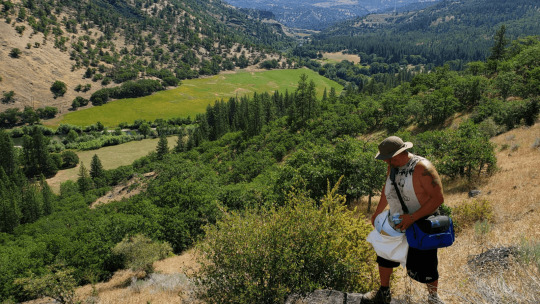
When it came to planting the seeds, Chenoweth has used a variety of methods, including seeding by helicopter alongside the old-fashioned way, by hand. Beginning straight after the first draining in late 2023, the team hand-sowed 500 acres of land, including 25,000 acorns. "It really is the most effective restoration tool. And the only reason we used a helicopter was when muddy conditions made it too dangerous for us to walk on the land." The results were "excellent", Chenoweth says. "Despite a hot and dry summer, where we've seeded is green, we're seeing flowering plants teeming with life. I counted eight different butterflies in the areas we hand-seeded. There's moths, hoverflies, bees, birds. It's been a really exciting first year." The team will continue to seed and plant the area for another two years, prioritising the tributaries important for salmon habitat. "The first year has definitely given me a lot of hope," Chenoweth, "but it'll probably get more challenging from here. Now we're completely at the mercy of Mother Nature."
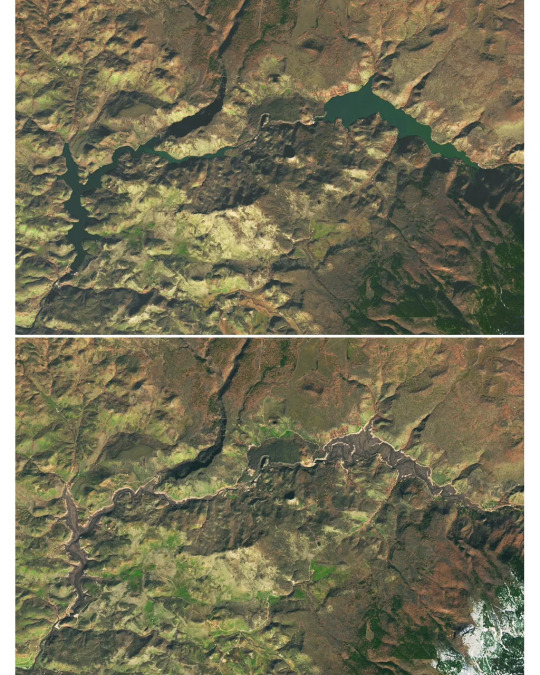
180 notes
·
View notes
Text
French agrivoltaics company Sun’Agri says that two of its facilities increased grape yields by 20% to 60% in 2024, compared to areas without solar panels. The PV modules helped regulate temperature fluctuations, reducing summer heat peaks and winter temperature declines.
101 notes
·
View notes
Text
<3

New Solarpunk illustration, yay! The full thing was made for a thing, but also each half was also drawn for the Solarpunk (writing) Prompts podcast.
This one features a maker/hackerspace. It's a thing that has existed for a while but that few people seem to know about? I myself learned about the idea from a friend relatively recently. While I've never been to one myself, plenty of references were provided and I hope I've captured the feeling well enough.
Saw the "Free shrugs" t-shirt in a 3D render over here, I believe, and fell in love with it at first sight lol. Also a locker that was plastered with stickers warning that's it's explosive, radioactive, a bio- and fire hazard and may electrocute you was too funny not to adopt. I wonder what they kept in there.
450 notes
·
View notes